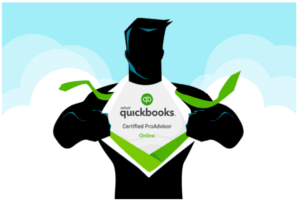
For any tax year, QBI is the net amount of items of income, gain, deduction, and loss with respect to any qualified business of the taxpayer. Qualified items of income, gain deduction, and loss include such items that are effectively connected with the conduct of a U.S. trade or business and are included in determining the business’s taxable income for the tax year. If the taxpayer’s taxable income (before the QBID) is above the threshold amount, the deduction may be limited based on whether the business is an SSTB, the W-2 wages paid by the business and the UBIA of qualified property used by the business. These limitations are phased in for taxpayers with taxable income (before the QBID) within the phase-in range and are fully applied to those whose taxable income exceeds the phase-in range. Include here the qualified portion of PTP (loss) carryforward allowed in calculating taxable income in the current year, even if the loss was from a PTP that you no longer hold an interest in or is no longer in existence.

His experience and passion for business reach beyond accounting and he helps businesses focus on what the numbers mean organizationally, operationally and financially. A qualified trade or business includes any trade or business for which qbid you may deduct ordinary and necessary business expenses. In the calculation of the W-2 wage limit for Jelly Supply, the sum of 25% of W-2 wages and 2.5% of the unadjusted basis of assets exceeded 50% of the W-2 wages of Jelly supply.
Q43. I am a farmer who is a patron of a Specified Cooperative. Could I be entitled to two deductions under section 199A?
And because QBI should not reflect those wages or guaranteed payments, perhaps this provision is saying your income from the S corporation or partnership should be the income BEFORE the business deducted the wages or guaranteed payments. With income of $500,000 reported on Schedule C, A would begin the process of computing his deduction by simply multiplying his qualified business income (QBI) of $500,000 by 20%, yielding a tentative deduction of $100,000. The reduction ratio is applied to this hypothetical amount to determine the reduction of the wage and capital limitation. Sec. 199A creates a deduction based on an “artificial” calculation of business income instead of actual economic outlays required for most other business deductions. The provision is a significant tax benefit for many noncorporate businesses and was passed in part on the premise that a sizable tax rate cut for C corporations — from a maximum graduated rate of 35% down to a flat 21% rate — justified a corollary tax benefit to non—C corporation businesses. The Sec. 199A deduction is taken at the partner, S corporation shareholder, estate and trust, or sole proprietor level for tax years beginning after Dec. 31, 2017.
Although the information provided is intended to be timely and accurate, we cannot guarantee its accuracy on future dates. No individual or entity should act on this information without the advice of a professional and careful consideration of the particular circumstances. If all of this sounds complicated, it is, at least when you get to the higher income levels.
Q46. How is the patron reduction computed and what are qualified payments?
If you’re the sole owner of an LLC that isn’t treated as a separate entity for federal income tax purposes, enter the EIN given to the LLC. If you don’t have an EIN, enter the owner’s name and tax identification number. PTP income generated by an SSTB may be limited to the applicable percentage or excluded if your taxable income exceeds the threshold, in which case you may need to complete Part II of Schedule A (Form 8995-A). See the Instructions for Form 8995-A for more information. (C) to the extent provided in regulations, any payment described in Section 707(a) to a partner for services rendered with respect to the trade or business.

Whether rental real estate rises to the level of a trade or business under section 162 depends on all the facts and circumstances. To be engaged in a trade or business under section 162, the taxpayer must be actively involved in the activity with continuity and regularity and the primary purpose for engaging in the activity must be for income or profit. The taxpayer does not, however, have to materially participate as defined by section 469. Enter on line 1(b) the employer identification number (EIN). If you don’t have an EIN, enter your social security number (SSN) or individual taxpayer identification number (ITIN).
About Form 8995, Qualified Business Income Deduction Simplified Computation
Before continuing this discussion, two points need to be made clear. First, if taxpayers are below the threshold amounts, they are eligible for the 20% deduction regardless of whether their business is an SSTB. Second, the SSTB classification applies to the business regardless of whether the taxpayer is actively or passively involved in it. Any trade or business that involves the performance of services that consist of investing and investment management, trading, or dealing in securities described in Sec. 475(c)(2), partnership interests, or commodities described in Sec. 475(e)(2) (Sec. 199A(d)(2)(B)). Because A’s taxable income is below the threshold of $315,000, the W-2 limitation does not apply.
The depreciable period ends on the later of 10 years after the property is first placed in service by on the last day of the last full year in the applicable recovery period under section 168(c). Additional first-year depreciation under section 168 doesn’t affect the applicable recovery period. Improvements to property that has already been placed in service are treated as separate qualified property. In general, total taxable income in 2023 must be under $182,100 for single filers or $364,200 for joint filers to qualify.


















